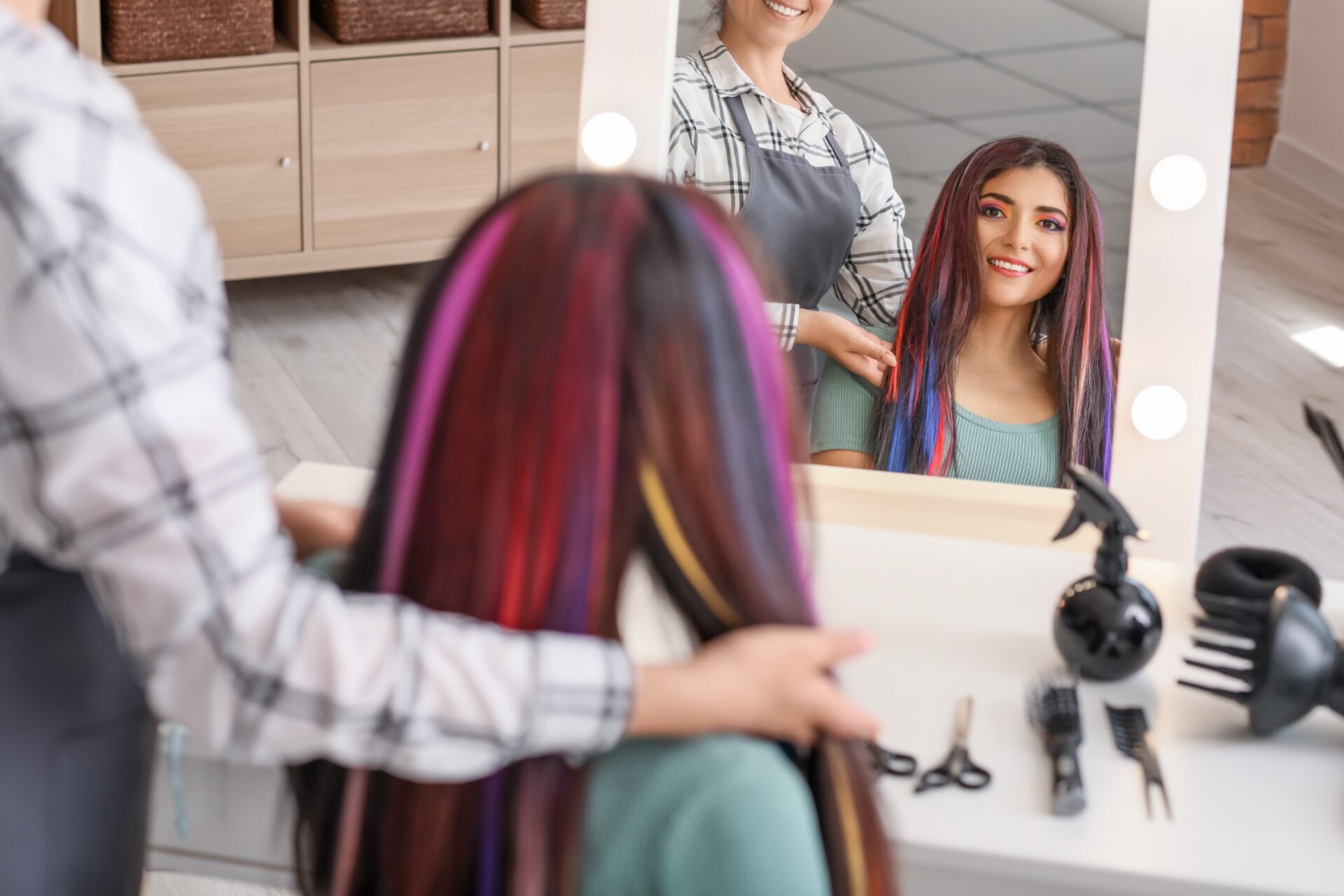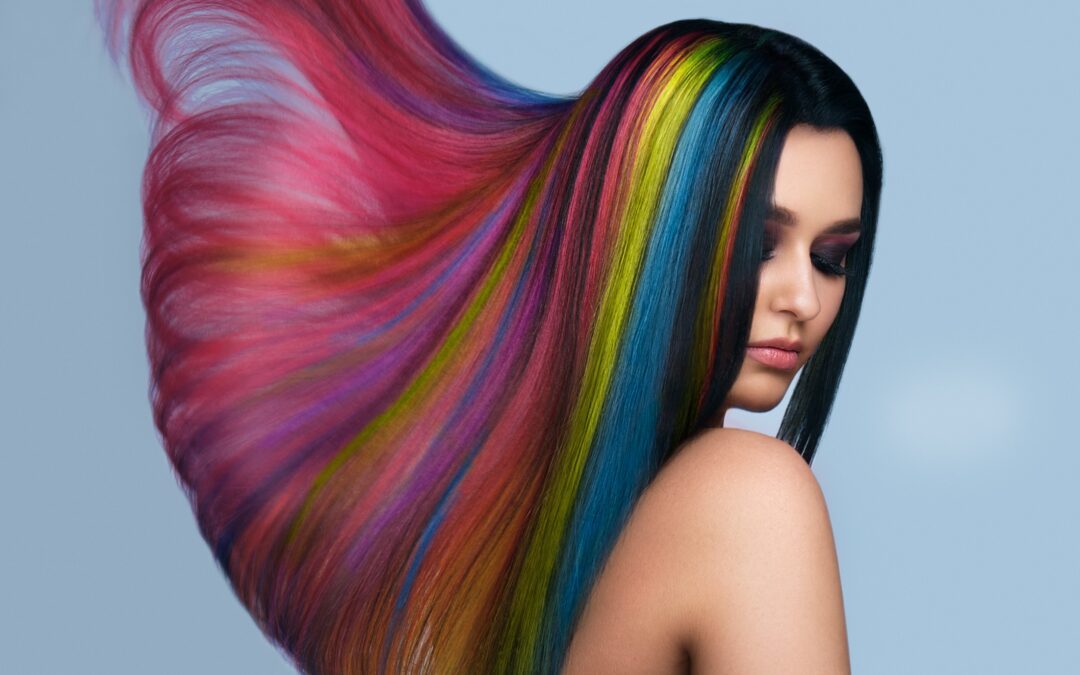Changing your hair color is a great way to brighten up your daily routine. With so many different types of hair coloring services available, you may be at a loss as to which one you should opt for. It’s natural to feel uncertain of your choice, as well as the potential effect that hair coloring might have on your hair.
In this guide, we will take a closer look at the different techniques and the science behind hair coloring, as well as some tips and tricks that will help you choose the right color for your hair.
Types of Hair Coloring Services
People have been coloring hair for thousands of years. Pigments from plants and various minerals can cause chemical reactions that change hair color. After a French chemist, Eugene Schuller (also the founder of L’Oreal), created the first commercial hair coloring product, the world witnessed a surge in the popularity of hair coloring. Today, plenty of options exist to help us express our unique selves by transforming our hair in creative ways.
In our previous entry, we covered the major types of hair coloring services. For a brief reminder, the major ones are:
- Ombré
- Sombré
- Babylights
- Highlights
- Lowlights
- Bronde
Major Hair Coloring Product Levels
There are three degrees of hair coloring: semi-permanent, demi-permanent, and permanent. The former one lasts for 6 to 12 shampoos, the middle one can survive through 24 to 26 shampoos, while the last one only requires regular touch-ups every 4 to 6 weeks to cover the roots that show your natural color.
When it comes to choosing the level of hair coloring, it is safer to start with semi-permanent and demi-permanent to make sure you’re totally satisfied with your new color.
The Science behind Hair Coloring Services

Now, let’s take a deep dive into how hair coloring works. Each hair has a root that is located in a follicle underneath the skin. The cells in the follicle keep dividing, pushing older cells up and forming the hair. In essence, each strand of hair is dead tissue because the cells in it are no longer dividing.
Each hair has three main levels. The outermost level is called the cuticle. The cuticle is wrapped around the cortex, which is composed of keratin and various other proteins.
Hair follicles produce melanin, which gives hair its color. Melanin is a pigment that comes in two varieties: eumelanin and pheomelanin. People with dark and brown hair have a lot of eumelanin. Pheomelanin gives a red color, while blond hair has little eumelanin.
The process of hair coloring begins with opening the cuticle to allow the dye to enter the cortex. This is achieved with the help of an alkaline chemical, ammonia.
The next step for dark hair is to remove the existing color. This is done with peroxide, also known as an oxidizing agent. While peroxide breaks up chemical bonds inside the hair, sulfur gets released. Meanwhile, ammonia acts as a catalyst.
At the end, the new color is bonded to the hair cortex.
If you choose to dramatically change your hair color, it is best to entrust this task to professionals to make sure that no strands of hair are left out in the process.
How to Choose Your New Hair Color
Are you excited to experiment with your hair color? Our stylists will be more than happy to help you choose the best match for you. But first, here are a few suggestions that will help you narrow down your options.
Consider Your Skin Tone
The tone of our skin is determined by the supply of melanin. The more melanin in the skin, the darker it looks.
Consider Your Undertone
The undertone of your skin is the color beneath the surface of your skin. It stays the same throughout the seasons, while your skin tone may change. The undertone can be either warm, cool, or neutral. It is determined by the proportion of different types of melanin present in the lower layer of your skin.
One of the popular methods for determining the undertone is checking the color of the veins. Those of us who have blue or purplish veins have cooler undertones. Those with colorless veins have neutral undertones. Those with greenish veins have warm undertones.
Choosing Your Hair Color
While advice from a professional hairdresser is indispensable when choosing your new hair color, there are some general guidelines on what colors fit best with which skin tones and undertones.
Golden with red highlights, golden brown, honey brown, chestnut, copper, and mahogany are the best colors for you if you have warm undertones.
Plum and burgundy highlights, ash and platinum blonde, brown, dark brown, black, slate, salt and pepper, and pure white are great options if you have cool undertones.
If all these shades of hair colors sound like a mouthful to you, an appointment with a professional hairdresser in Bonita Springs can help. We will help you choose the color that is right for you!
Taking Care of Your Hair after Coloring
It is only natural for the new hair color to start fading. Each time you wash your hair, the shampoo opens up the cuticles, and some of the dye leaks from the cortex. Applying gloss between shampoo and conditioner helps add shine and softness to hair. The gloss contains behentrimonium chloride and amodimethicone, which boost the health of your hair as they prevent it from drying and developing split ends. You should also consider popping in for professional gloss treatments that last around 20 to 40 minutes, ensuring that your hair gets all the benefits from the applied gloss product.
At Kate Kuts, our mission is to empower residents of Bonita Springs, Florida, by helping their unique selves shine with a variety of transformative hair coloring services. Our stylists are ready to support you every step of the way as you embark on your hair coloring journey. Contact us today!


